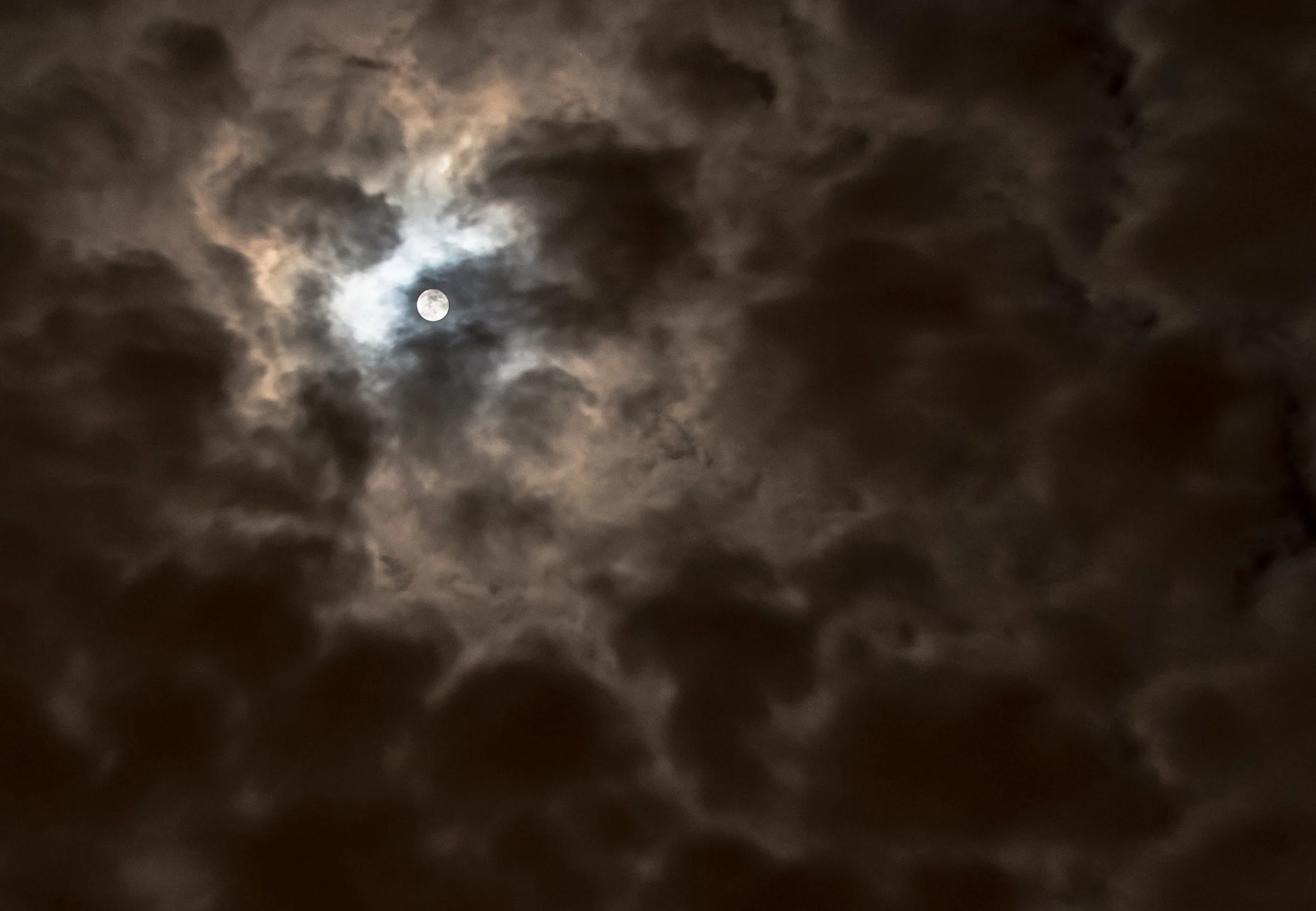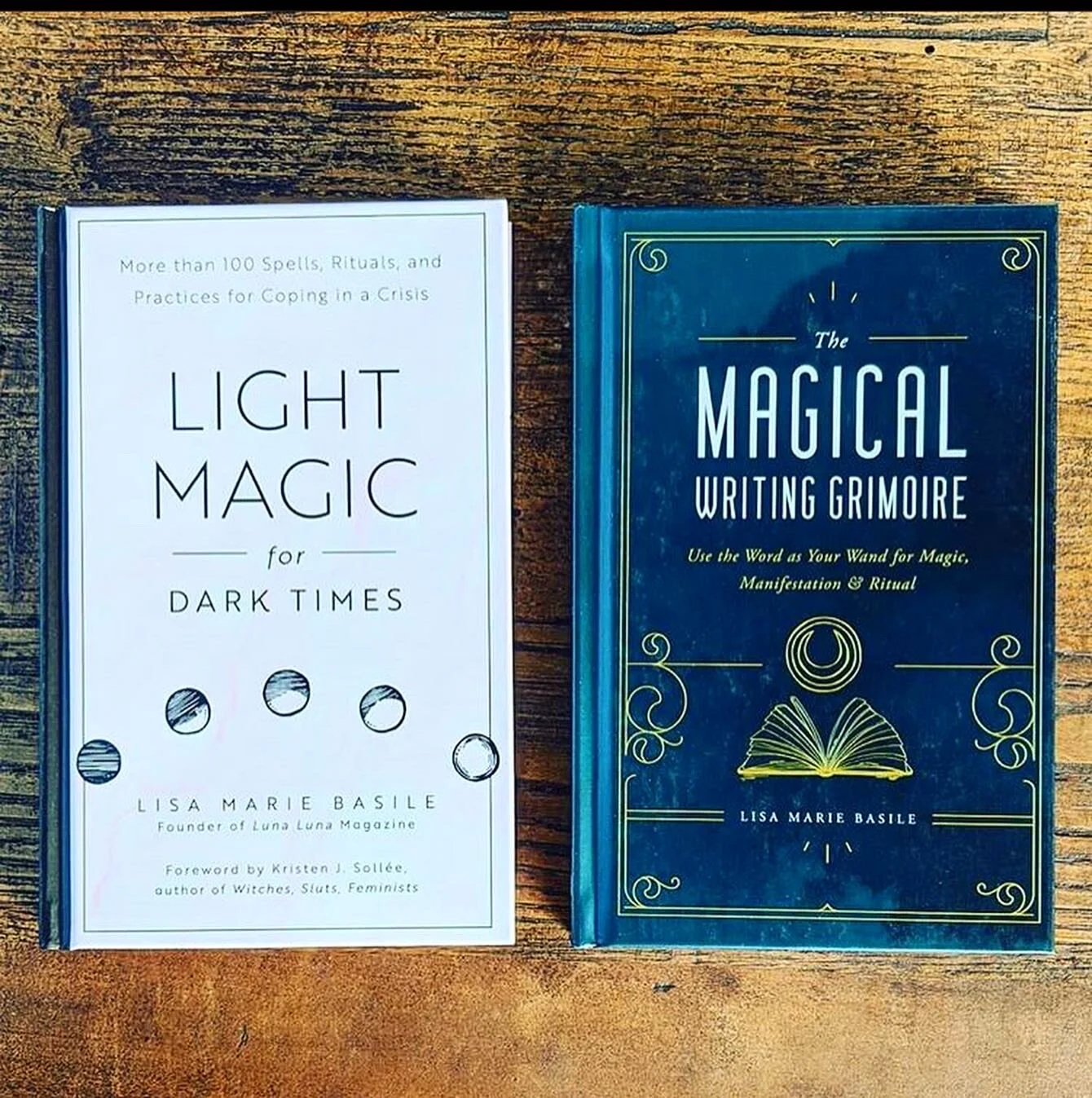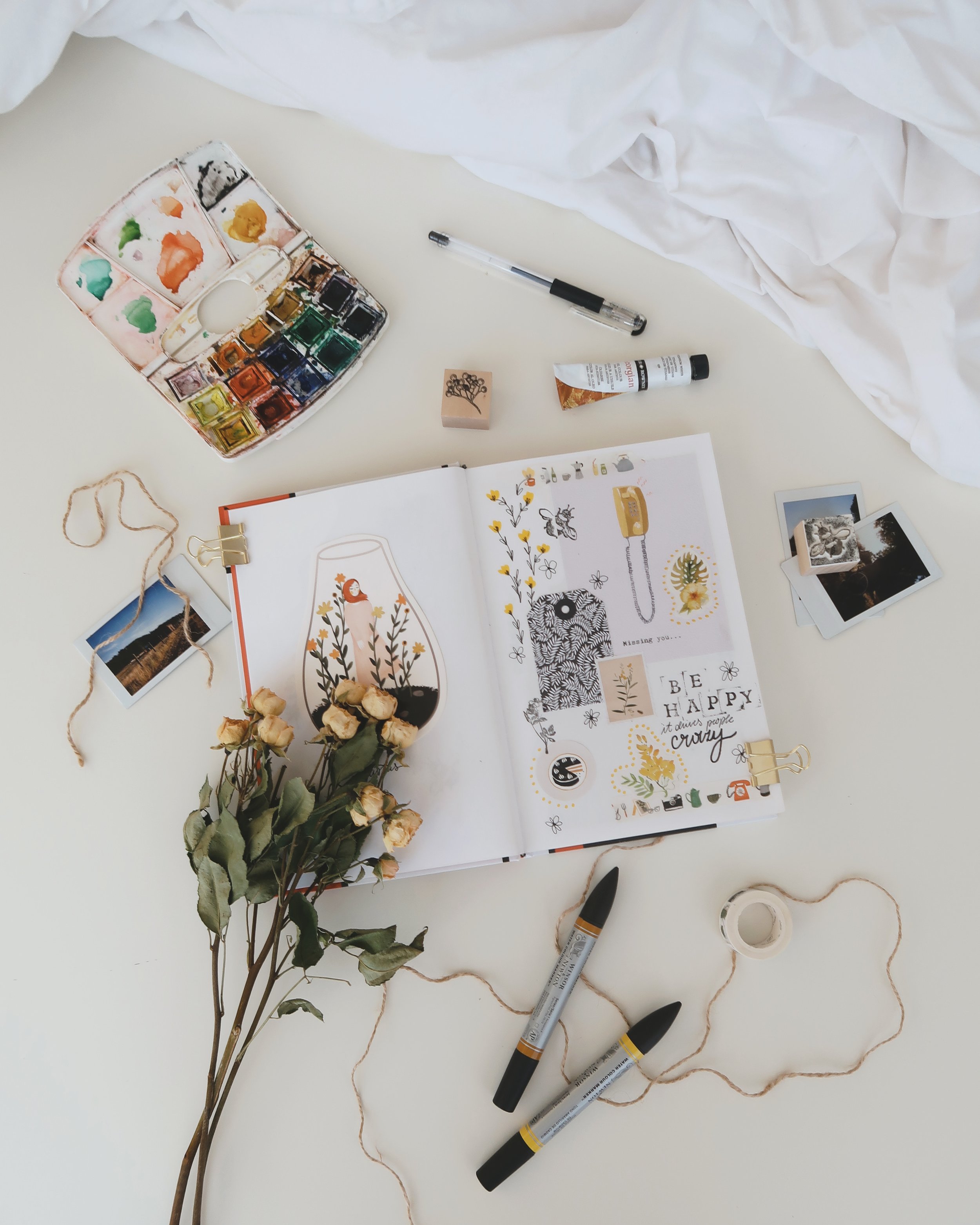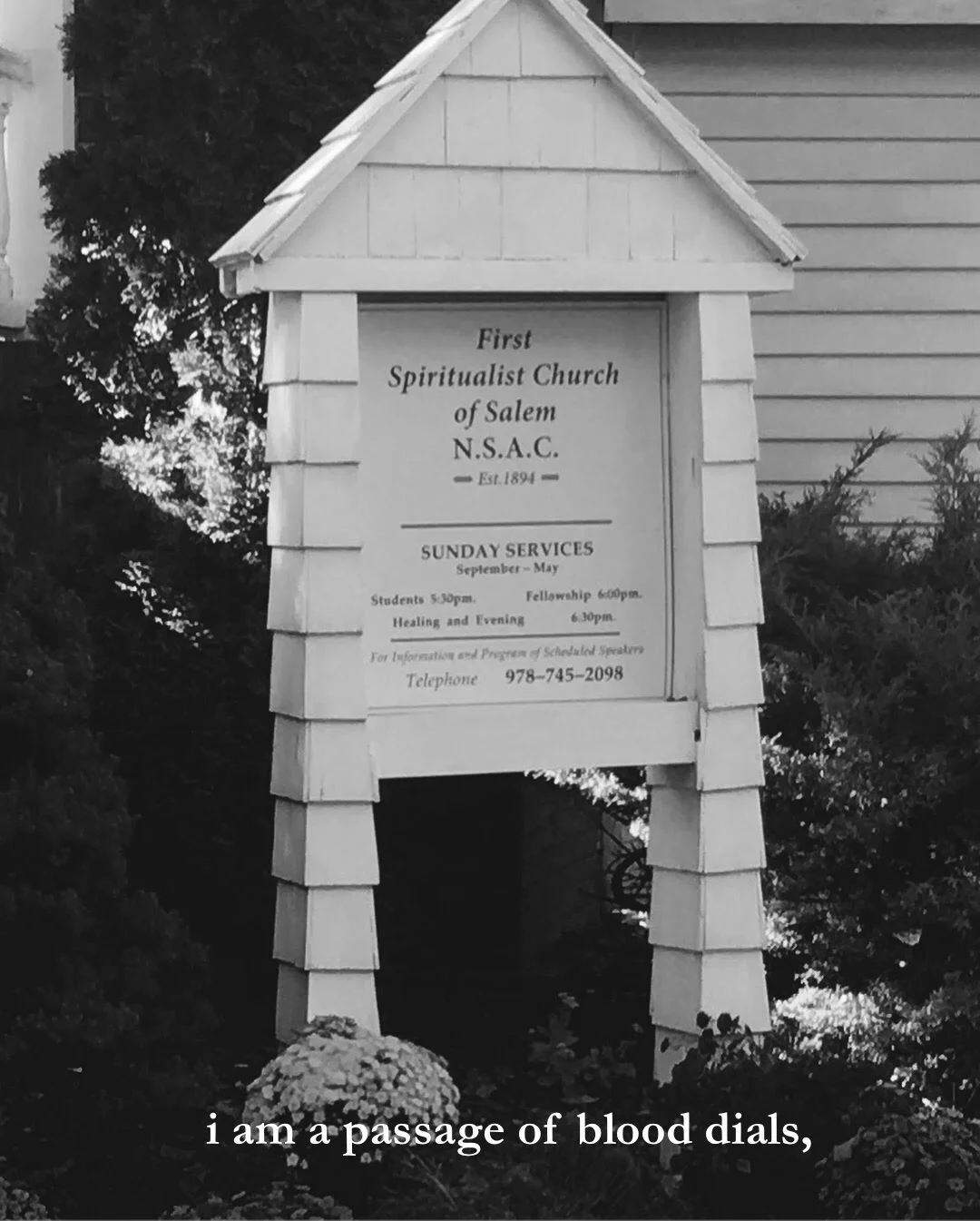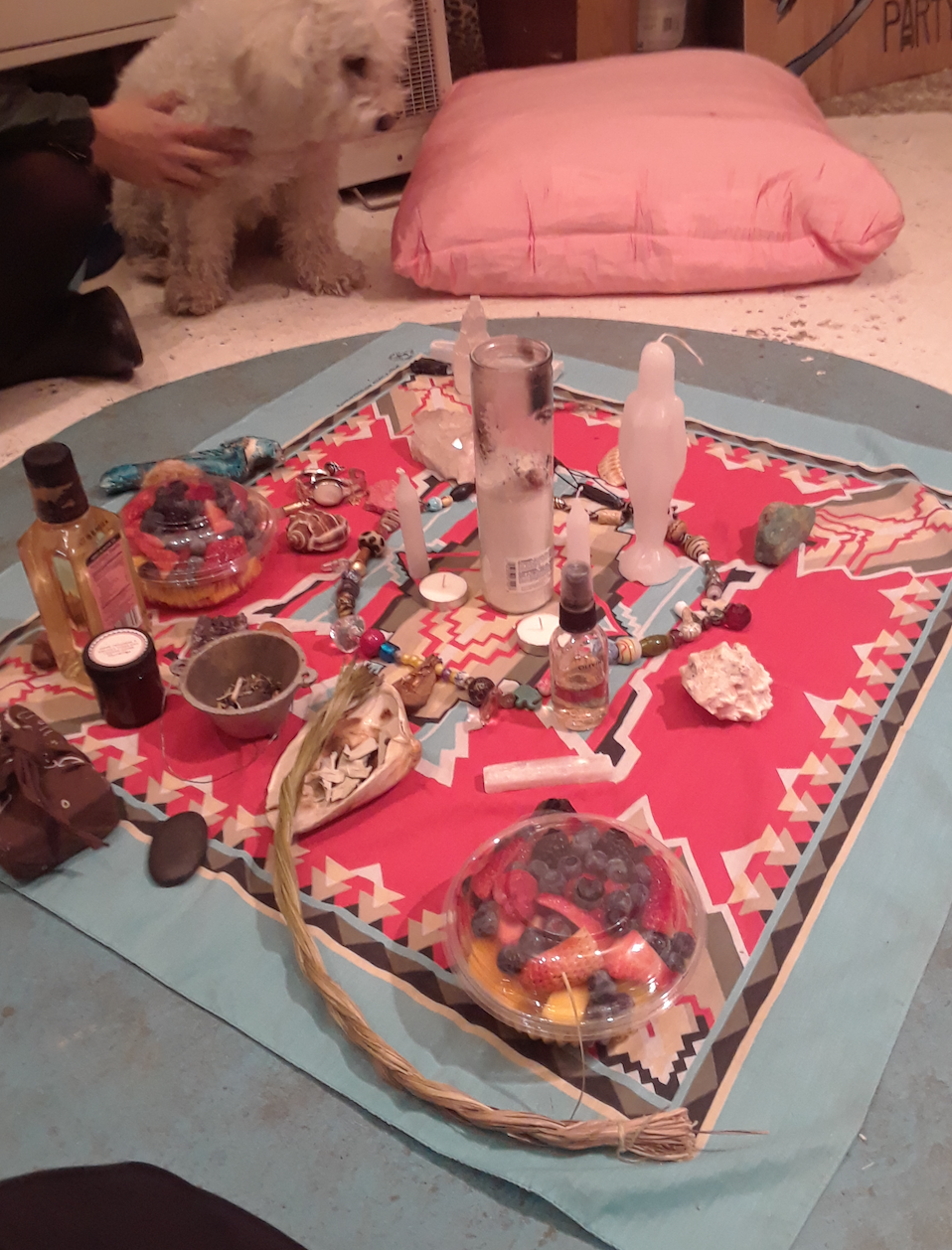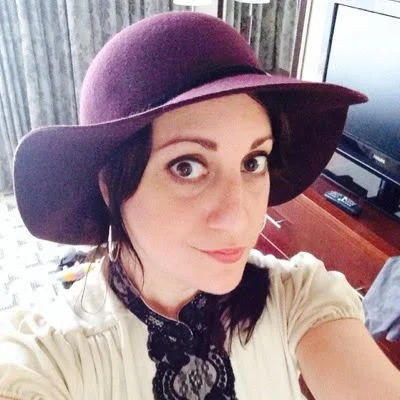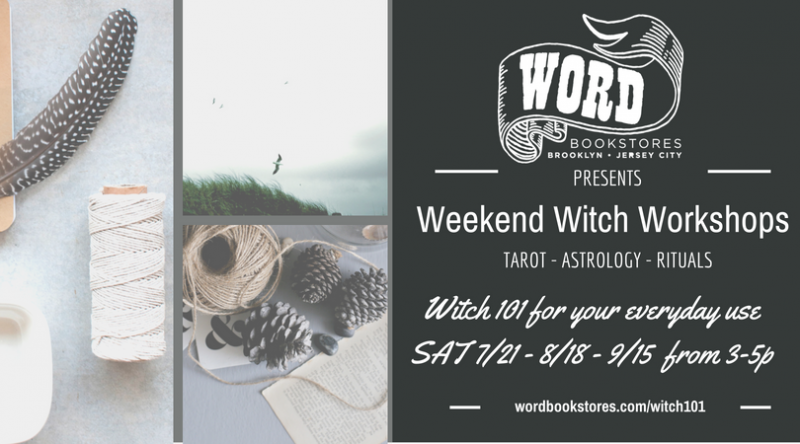BY CALLIE HITCHCOCK
Every time I walk into Cult Party, an all women-run intersectional feminist witch shop in Bushwick which opened in 2017, there are new magical objects bursting from each fold and corner. Every item is held in a delicate, seemingly impossible, possibly magical, balance. They have dangle earrings depicting Venus of Willendorf — the plump, breasty figure who dots the pages of every anthropology and art history textbook ever printed, and is a symbol of fertility said to date back to 25,000 BCE; a gold plastic trophy plated with “Raging Pansexual” at the bottom; dragon’s blood artisan incense; spell candles; a vest with a print of the tarot card queen of cups; energy crystals; and honey laced with CBD, a chemical found in marijuana that is legal to sell.
These are a few of the things I notice when I attend Cult Party’s reading for Kristen Sollée’s Witches, Sluts, Feminists : Conjuring The Sex Positive, where other writers read from their work as well. The air in this small corridor space is heavily perfumed and the murmur of women conversing feels hypnotic, warm, ancient.
I have no extensive experience with witchcraft, but I do have a previous interest in astrology and tarot cards. My nature has always been inclined toward narrativization, introspection, analyzation, pinning things down. As a neurotic, organizing my experiences, fears, and hopes with astrology and tarot was always a relaxing and practical illusion.
Kristen Sollée stands at the front as she hugs Jacqueline Frances, a woman in a black latex catsuit who I recognize as the admin for a popular Instagram account called Jaq the Stripper which chronicles their life as a stripper and works to create solidarity for sex-workers. Kristen is wearing a long hot pink jacket and matching lipstick with pink glitter. Something feels odd about her but I can’t tell what– until I realize she has no eyebrows.
Kristen begins to speak. The crowd quiets down, without her having to ask. Kristen knows her stuff — her articles on witches are published widely and she is co-founder of the Occult Humanities Conference, a lecturer at The New School, and founding editor of Slutist, a sex positive feminist website. She commands the room, with the breadth of knowledge and immersion into witch culture, while maintaining an open, approachable mien. From her book she reads about the mythos of women as witches throughout history and what the female witch represents:
“The witch is a shapeshifter. She transforms from vixen to hag, healer to hellion, adversary to advocate based on who seeks her,” she says. It reminds me of Kali Ma, the Hindu goddess of birth and destruction and of the enormous power that human society has long seemed to both worship and fear in women. The burning of witches is a manifestation of this contradiction and it is the same contradiction that informs why women are shamed and policed for their sexuality today. That women have reclaimed the image of the witch as a symbol of autonomy, comes as no surprise.
When the last reader of the night says, “The power and the energy in the room with everyone reading was tangible to me,” I agree with her. I feel lighter, on a higher plane of solace and joy with all the women in the room and the readers who shared their stories. I walk to the back to buy some CBD oil and I meet Cult Party’s owner Debbie Allen. As Debbie rings up my receipt, I chat with her about the space and she tells me that she is so happy that she has been able to create a store dedicated to “holding space for women.” I’m happy too.
~~
Cult Party demonstrates an increased cultural interest in the occult over the past few years. Today, witchcraft maintains an emphasis on ritual, community, spirituality, and healing, while focusing on feminist undertones and eschewing dogmatic religious ties.
In her book, Sollée writes that she was drawn to the character of Maleficent in Sleeping Beauty because “she was the witch I wanted to be: a woman in control… like many millennial women, I see a reclamation of female power in the witch, slut, and feminist identities.”
Witch practice is experiencing new vogue among millennials. Laurie Penny, a journalist and self-described “former spooky girl” muses that “a general sense of powerlessness in a chaotic and competitive society, along with a revived interest in forms of feminism that don’t care who they frighten, may explain the growing appeal of hedge magic as a cultural aesthetic as much as a practice.” Witchcraft transverses many axes — female empowerment, community, belonging, and a system of beliefs and values.
The competition and chaos Penny describes also correlates with the increasing reliance on the growing gig economy of contract or freelance work. Many millennials are left without health insurance, a salary, or retirement benefits.
The workplace has become decentralized, and a large chunk of interpersonal interactions have been siloed into social media. An isolation forged from aimlessness, and lack of structure have taken the place of older forms of social belonging. Millennials are all looking for a way to scrape up some softness and humanity where they can.
~~
Back at Cult Party, the source of the magic, I see the owner Debbie Allen carrying a glass from home with iced coffee in it. It is a sunny afternoon and she’s holding the leash of a hearty squish of a dog that she is looking after for a friend. His name is Lear. “I call him a chicken nugget. If he was left in the wild he would be a snack,” says Debbie as we huddle together in the back by the register and the wall with a rainbow painted on it.
Debbie is in her thirties, has long brown hair and bangs that softly curve around her face. Her kind smile and unhurried gait match the warm spring day and she seems so relaxed and happy that my imagination will keep reconfiguring this memory of her as also barefoot on the pavement. Lear whines constantly, possibly from being away from his true momma, and giving him attention doesn’t salve his unsoothable pout for long. I feel an uncomfortable kinship with Lear in this but choose to focus on the task at hand.
Cult Party, Debbie tells me, started as a seven person collective in July of 2017 and the remaining members are Debbie and Al Benkin, a short-haired blonde artist, also in her thirties, who joins Debbie and I. Now the store runs as a co-op where vendors rent space to sell their wares and take turns manning the shop. Debbie and Al met while vending around town. Debbie was selling her brand of clothes, pins, stickers and patches called Hissy Fit, and Al was selling her art. The conversation moves towards the occult and Debbie tells me about her first inklings of her witch identity.
“I was always the kid playing with ouija boards, trances, seances, always getting in trouble at Christian camp,” she says, recalling that as she got older she would take her friends to the roof of her house to write down intentions and burn them. I ask Al if she identifies as a witch and she says, “I'm not against witchy things, I do believe we have more energy in the matter. I think different stones carry different energy but I'm not super woo-y about it. I'm a lot more science based than anything.”
We chew on the merits of a witchcraft practice for a few moments before Al suggests why feminism and witchcraft have historically gone hand in hand. “People manifest their own reality in their beliefs and people want to feel like they have some power in their decisions.” Witchcraft fosters a sense of power of self-determination, and feminism aims to create self-determination against perennial sexism and misogyny.
“I think it really helps people set the course for their quality of life in some way. It gives them a moral code and standards to abide by that makes them feel like they're being a good person and I don't think theres anything wrong with that,” continues Al. Moral code, ritual, symbolism — the touchstones of any meaningful religious practice.
Debbie adds: “When I dropped Christianity I went through a phase where I wasn't into anything.” She’s not alone.
According to a 2017 study by Pew Research center, 27 percent of millennials ages 18-29 attend religious services weekly compared to 38 percent of baby boomers and 51 percent of the parents of baby boomers. With a lack of trust in old belief systems, and a lack of trust in political leaders (Donald Trump only got 37% of the millennial vote), where do the non-religious go to find guidance?
Without social trust of politicians or structured belief systems, it can be hard to know where to look for a system of values or a narrative to turn to for meaning. Debbie explains that she started practicing witchcraft more heavily when she had been in her T-shirt company job for ten years and credits witchcraft with helping her set a new course for her life. She started to do more witch ceremonies with her friends to set intentions like she did on her roof as a teenager.
“I don't know how much of the magic part of it I believe, but I do see when I put things out there, they come back. So in a real world way if you put out there what you want, you'll start to see opportunities present themselves,” says Debbie.
“You have to tell the universe what you want,” Al concurs.
For Debbie, rituals served as a kind of therapy — a way to check in with herself and set personal goals. A witch ceremony is a way to really immerse herself in paying attention to what her inner self wants to say. “When you're living your authentic life, instead of hiding or lying to yourself, things start appearing. Since I started, things just start happening weirdly. Synchronicity. Things start fitting into place.”
Al’s face has been slowly illuminating.
“You know what, I'll try that. I'm not anti, I will try it.”
Debbie’s calm yet vital aura is infectious. When she talks about witchcraft as a place of healing and ceremony, something in the core of my humanity lights up– a need basking in its articulation.
I decide to attend my first full moon ceremony at the shop.
~~
Callie Hitchcock
On a dark March evening I bike to the little Bushwick store, unaware of the impending rainstorm. Debbie, the house witch Staci Ivori, two other ladies, Lear the dog, and I huddle into the cold little shop.
A few of us shuffle our feet and awkwardly try to find a space to sit or stand that is out of the way of Staci readying the altar. I start talking to Alayna, who has come in from Long Island. She wears a pink dress with a moon scene on it and sparkly square toed boots. Within minutes we are already discussing bad boyfriends. An old boyfriend of hers didn’t like her witch dealings or aesthetic, and wanted her to cut her hair.
We laugh and exchange more stories of personal feminist heroics and rebellions. The inimitable female intimacy of the encounter warms up my bones; I revel in the ease with which I can connect with most women so quickly and deeply. No shame, no one-upmanship, no hiding.
Debbie had told me about the purpose of full moon circles: “It's really important to have a safe place where you can speak and not feel judged or shut down.” A full moon circle is meant to be a space where women get a reprieve from quotidian interruptions, disrespect, or feeling like their ideas and interiority are ignored because of their gender.
To begin the full moon ceremony we sit down in a circle around a square bandana with a blue and red geometric pattern. This is our altar — the bandana is decorated with crystals, geodes, sage, candles, a beaded necklace, and seashells. We are instructed by Staci to put on the altar an object that we want to be charged. Some women have brought their own crystals, some put in their jewelry, and I put in my pen for lack of an object, but feel chuffed realizing that it has symbolic significance for my nascent writing career. My pen needs all the energy it can get.
After making salutations to the north, west, east, south, sky and ground, we go around the circle and each woman gets a chance to do an emotional check-in on our head and our heart. We each go around and say what’s on our minds in life right now and how we are feeling emotionally. I share about writing projects I’m worried about and how I’m feeling about a new guy I’m dating.
As the night wears on, I slowly steep in the warm sharing energy of the group. Everyone is open, honest, and taking great care to foster a kind of sacred space opening up between all the women in the circle. Later on we do a self breast massage which might have initially seemed silly, but by that point in the evening I am in a relaxed meditative state and it all makes sense. We have to release negative energy and demonstrate physical care toward ourselves among other women.
At the end Staci asks us to write down some introspective questions. What are some areas in life that have meaning to me? What makes me feel nurtured? We share our answers and make promises to ourselves in the form of a mantra. Mine is, “remember my power.” Afterward, I feel closer to these women and everyone seems relaxed, happy, and caring. Everyone is very concerned about me riding home in the rain but I roll away into the night, the glow of the little shop fading behind me.
~~
The next time I’m at Cult Party, they are hosting a clothing drive for a women’s shelter. As I walk into the store I hear someone say “I wish I could live here,” as they study some of the colorful bits and bobs of the shop. I see Debbie, and we talk with her friend about the full moon ceremony Debbie and I attended. Lear is puttering around the shop, still without his mom but remarkably less whiny and more relaxed with his surroundings this time around.
I am eventually drawn to the tarot card reader in the corner. Her name is Claire. She looks like a young Professor Trelawney– long blonde hair, big stone earrings, matching necklace, and large wire rim glasses. I put ten dollars in her donation jar and we begin. She starts by holding my hand while I hold the tarot card deck in the other. I moved to New York a few months ago and haven’t had much physical human contact, so her hand holding mine is a little startling but really nice. As I tell her about my question for the cards and we begin to pull them, I get this spine tingling feeling in my lower back.
This happens every time I get my cards read or when I’m being “seen” somehow by the divine– coffee ground readers in Istanbul, palm readers at a fair. It’s not the same as the excited, but mostly depthless feeling of astrology– where it is fun to find characteristic matches like, say, a crossword puzzle, but it never calls up my core. The tingly feeling is a manifestation of a few things — having someone dedicate such directed care and energy toward me, plus a sense that with our interpretation of the cards we are channeling something higher, sacred, divine. For a brief moment we are calling up something written in this shared moment of curiosity and discovery– the humanity in a desire to learn the truth.
And in the end it is an act of care. Getting my tarot cards read feels like when someone unexpectedly gives me a shoulder massage. I hold very still, in an effort to not spook them, and so that it might continue forever. But the feeling of wanting it to last as long as possible clouds the pure goodness of the feeling. It nags me out of the moment– always keeping one eye on the inevitable end while wishing it away instead of enjoying and appreciating the moment of care.
A 2017 study in the American Journal of Preventive Medicine showed that for people aged 19-32, hours of internet and social media usage heavily correlates with feelings of isolation and loneliness. That this is the same age group of women taking up witchcraft, does not feel like a mistake.
Alex Mar, author of Witches of America, wrote after her long investigation of witch groups across America that “We don’t need a consensus on what does or does not have meaning.” We merely need “strategies for staying alive.” She concluded, “When you have that feeling, of an encounter with something greater than yourself– however subtle, whatever form it takes, trust it. It is evidence enough.”
Rolling away from Cult Party on my bike again I think she’s right. Something like religion is really just a way to feel a solace of the human spirit with others. Reaching out for a cosmology, a social space, and a sense of power over our own destinies– this can take any form.
The last two cards I pulled with Claire were Temperance, signifying a balance and two forces coming together to change each other; and Six of Pentacles, signifying an exchange between two people for a give and take. The cards have spoken.
Callie Hitchcock is a journalism Master's student at NYU in the Cultural Reporting and Criticism program. Callie has written on gender, sexuality, and culture for Slate, LA Review of Books, Slutever, Bust Magazine, and The Believer.




